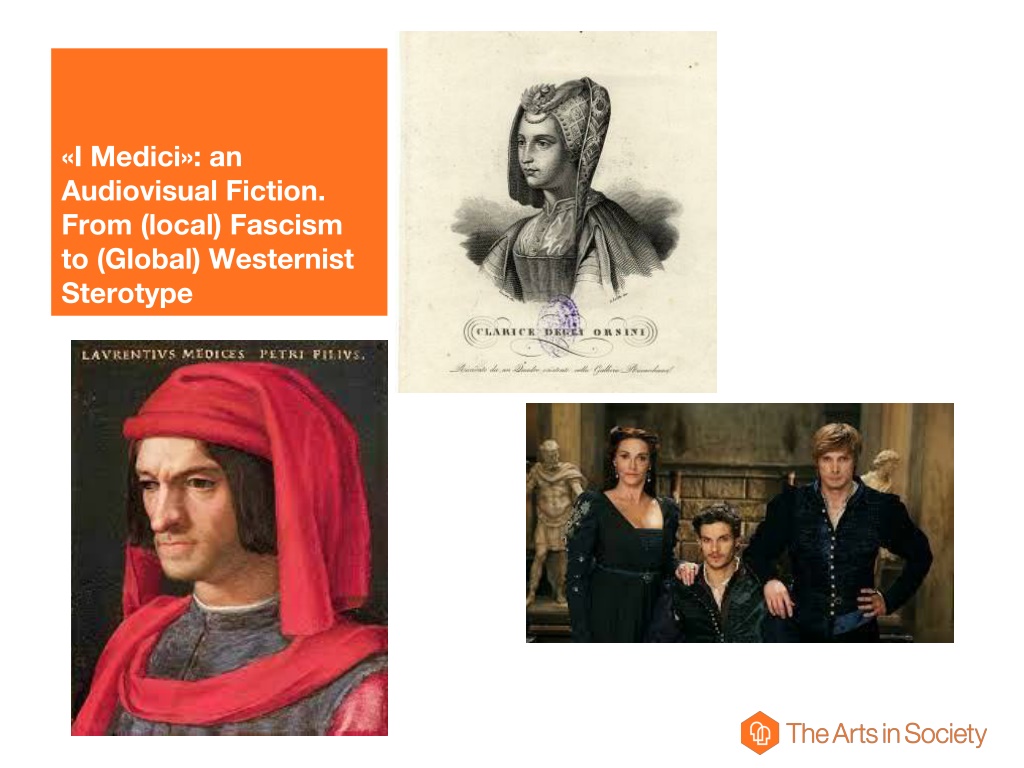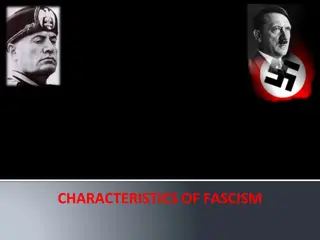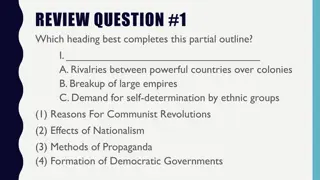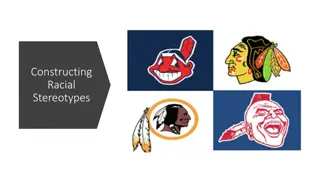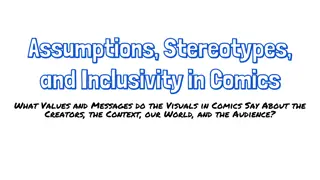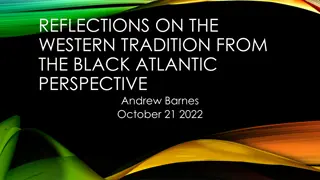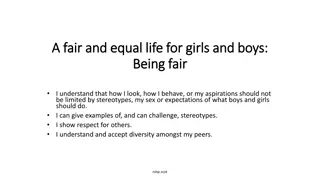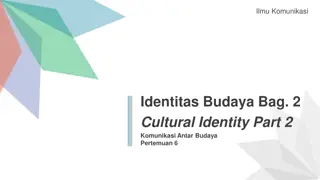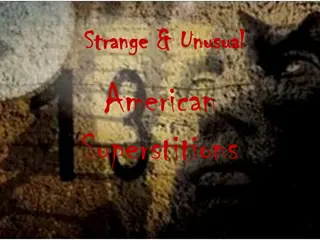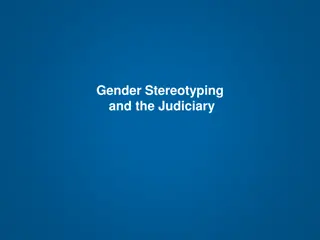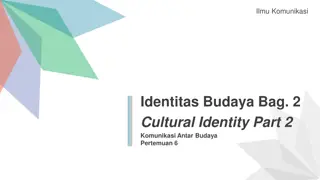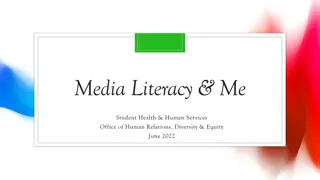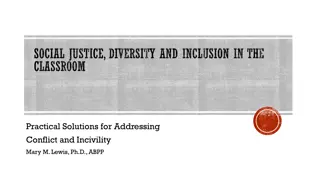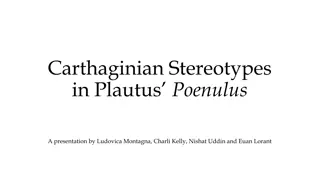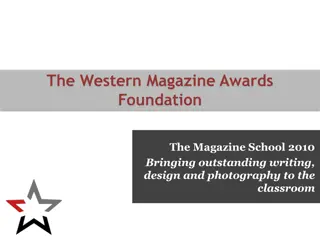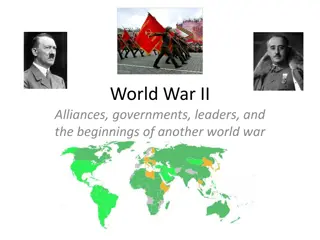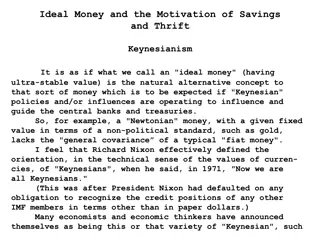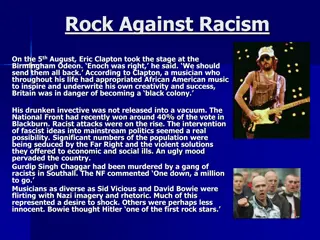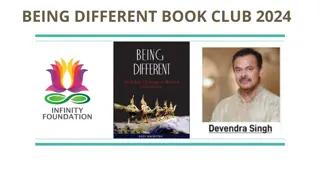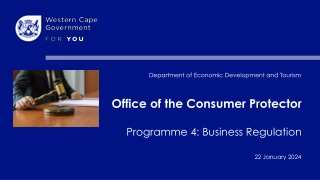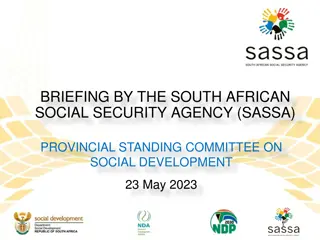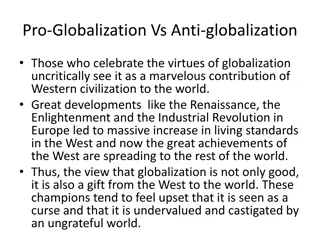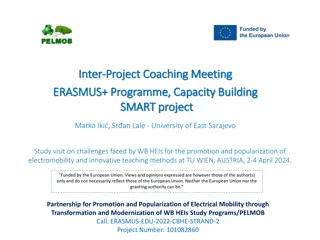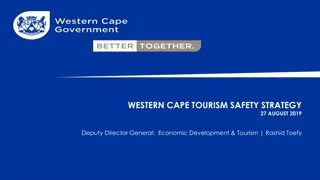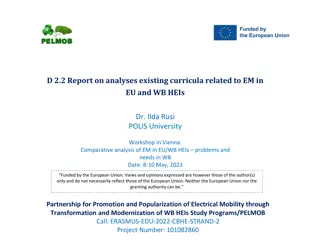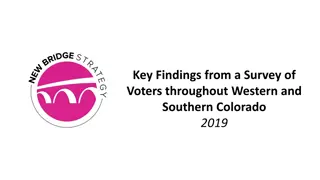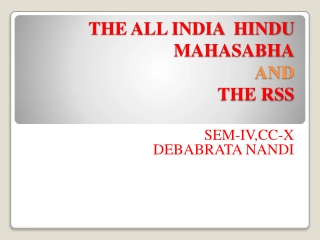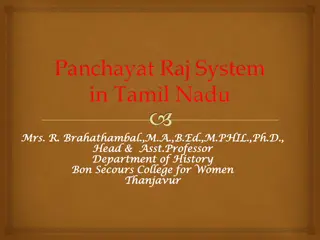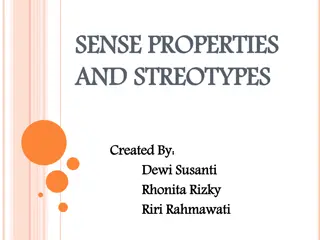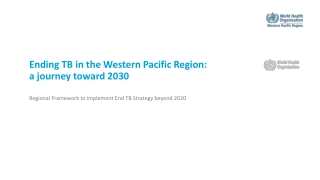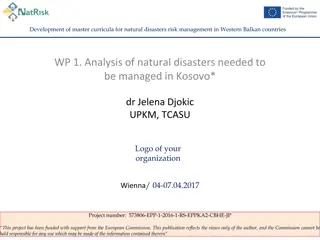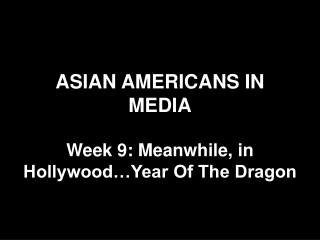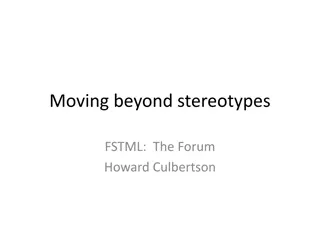From Fascism to Western Stereotypes: Analyzing 'I Medici' TV Series on Rai 1
"Explore the journey depicted in the Italian TV series 'I Medici' from local Fascism to global Western stereotypes. Aired on Rai 1 from 2016 to 2019, the show delves into Italian history and societal shifts, offering a unique perspective on the transition. Dive into the complexities of power, influence, and cultural representations in this captivating audiovisual fiction."
Download Presentation

Please find below an Image/Link to download the presentation.
The content on the website is provided AS IS for your information and personal use only. It may not be sold, licensed, or shared on other websites without obtaining consent from the author. Download presentation by click this link. If you encounter any issues during the download, it is possible that the publisher has removed the file from their server.
E N D
Presentation Transcript
I Medici: an Audiovisual Fiction. From (local) Fascism to (Global) Westernist Sterotype
TV SERIES 2016-2019 ON AIR Rai 1 is an Italian free-to-air television channel owned and operated by state-owned public broadcaster RAI Radiotelevisione italiana. It is the company's flagship television channel, and is known for broadcasting mainstream and generalist programming, usually aimed towards families, including TG1 news bulletins, prime time drama, cinema and entertainment, and major breaking news, sports and special events. Masters of Florence (2016) Lorenzo il Magnifico - The Magnificent (2018) Il nome della famiglia (2019) The first season aired under the English name, while the other twos under the Italian ones, and only later translated.
MEDICI: WHY? A way of re-branding the world's best-known 'fiorentinit ' (the Renaissance) A new way of re-reading them in the 2000s (different from the previous audiovisuals - dating from the beginning of the 20th century to 2007) and a way of 'reading' (which was, historiographically speaking, partly innovative but not entirely accurate) the history of the Renaissance and the relationship of politics with finance, as well as the struggle with tyranny, oligarchy and the personalisation of power.
WHAT DOES A HISTORIAN LOOK FOR? Likelihood? Philology? Suspence (just like everyone else)? And so on MEDICI THEY ARE A MIRROR OF WHAT WE WANT TO SAY AND WANT TO SEE OF THE PAST, TODAY. THE QUESTIONS ARE CURRENT, THE ANSWERS MAY OR MAY NOT BE 'IN LINE' WITH COMMON SENSE AND HISTORIOGRAPHY.
Big Light Productions, Lux Vide, Wild Bunch, Rai Fiction, Altice Studio PRODUCTION Executive producers Frank Spotnitz Luca Bernabei Matilde Bernabei Richard Madden (seasons 2 3)
FRANK SPONITZ The mastermind behind Medici is Frank Spotnitz. He decided to explore the Italian Renaissance with its splendours and conflicts: 'The challenge was to tell the story of the Renaissance to a modern audience. Why should today's young people be interested in a story of 16th century bankers? I looked for modernity in Medici and found a privileged young man who decides to take risks to change the world and make it better. Lorenzo de' Medici is an idealist, he wants to change the world and challenges the established order represented by Sean Bean's character. I find it a moving story, full of meaning about the past, but also about the present. And also shooting in Florence, Volterra, Rome, in the places of the Renaissance was a dream'.
CAPITALISM AND WOMEN 1.Frank Spotnitz points out: "There are no precise references, we have brought a bit of American style to Rai. The first season was about capitalism and the rise of the middle class, in seasons 2-3 we will deal with political power and its consequences. What is the value of art and beauty? What really counts? This country is a witness to the power of art, Lorenzo is a martyr to this cause'. Alessandra Mastronardi adds:"One of the most modern aspects of the show is to show the completeness of women whose names we have so far only read about in history books," explains the Neapolitan actress. "Lucrezia loves Lorenzo, she loves the boy before the patron, his frailties and his character behind which she already glimpses the man he will be. When she realises that state duty is stronger than this love, she will take a step back'. (CERTAINLY NOT A 'FEMINIST' READING)
Ettore Bernabei began his career as editor in chief of a Florentine newspaper with Christian Democratic ties called the Giornale del Mattino. Then, from 1956 to 1960, he was editor in chief of another Christian Democratic newspaper Il Popolo. Bernabei was also a close friend and associate of five-time Prime Minister and important Christian Democrat Amintore Fanfani I BERNABEI e ETTORE BERNABEI (1921-2016) In the picture, Ettore Bernabei is with the well-known Christian Democrat Mayor of Florence (1951-57 and 1961), Giorgio La Pira
In 1961, Fanfani appointed Bernabei to be the Director General of RAI Radiotelevisione italiana, where he remained until 1974. He took over RAI in the midst of an Italian Constitutional Court decision, renewing RAI's monopoly over television broadcasting. During his tenure as Director General, he furthered the tight grasp that the Christian Democratic party held over the broadcaster. His aim was to entertain and educate all viewers, while creating larger public support for the Christian Democracy. LUX VIDE was created by Ettore Bernabei and administered by his family. Before founding it, Bernabei sought the advice (or help) of the Italian Episcopal Conference (CEI). The Bernabeis have two points of reference: the relationship between the post-fascist republic and Catholicism and a historical populariser (Piero Bargellini - himself mayor of Florence in the 1960s). FLORENCE AND THE RENAISSANCE REMAIN FOREVER LINKED. EVEN IF THE "CITY OF ARTISANS" MAY BE MORE OR LESS RELATED TO THE CITY OF ARTISTS IN CERTAIN AGES. FASCISM MAKES IT A PAINTERISTIC CITY (AS IT HAD ALWAYS BEEN FOR TOURISTS) BUT ALSO ARTISANS AND IN THE 1950s AND 1960s IT TRYED TO MAKE IT A "UNIVERSAL" CITY). BOTH 'CLAIM' THE 'MEDICI' MATRIX.
OVER THE YEARS (1918 and 1935) Fascist Florence is represented by order of the Florentine (fascist ras) Alessandro Pavolini. The interest is in the 'bourgeois' and 'artisan city' and Lorenzaccio is ready to make the 'democratic revolution' (like Mussolini). In 1935 the 'good' Lorenzino was played by an actor of Albanian origin (watch out for future Italian 'colonialism'!
ALESSANDRO PAVOLINI THE FASCIST Alessandro Pavolini began his career and in '27 became the deputy of Marquis Luigi Ridolfi, the Florentine Pnf federal. Then in '29, the year of his marriage to Teresa Franzi, while the marquis was elected deputy on the occasion of the first plebiscite, Pavolini succeeded him at the head of the party. But Pavolini was also adept at redesigning the very face of Florence. He relaunched the city's cultural primacy in the name of established myths and traditions, claiming a full correspondence between Florentinity and the Fascist spirit, and outlined its development prospects on the triad: craftsmanship, culture and tourism and the potential of their reciprocal intertwining
Re-inventions by Pavolini The first National Handicrafts Trade Fair at the Parterre Exhibition Hall, an instrument to support an important sector of the Florentine working world and at the same time consolidate and promote the city's handicraft identity. In those same years, the Florentines witnessed the re-invention of the ancient game of historic Florentine football and, in 1933, the inauguration of the Maggio Musicale, born as a biennial event, but conceived as an event of the highest level, such as to draw a worldwide resonance on the city
FASCIST FLORENCE AND THE INVENTION OF THE NEW TOSCANIT
THE CENSURE OF WAR (JUST FUN. OFTEN ROMANTIC) GIULIANO (CONGIURA DE PAZZI) 1946 LORENZACCIO (19519
1960s AND 1970s MEDICI became "a brand" thanks to Bargellini's books (also distributed in the factories) and symbol of a "special city", devoted to its "function not only as a reminder of the glorious past but also of the present in an international projection". Creation of the myth of the 'city of peace' (with reference to Jerusalem). Just as Medici were linked to the papacy, so there is a strong link between the city's administration and the Catholic/Christian dimension.
ACTOR PROOF LORENZACCIO (1986) CARMELO BENE Video registration of Carmelo Bene's play 'Lorenzaccio, al di l di de Musset e Benedetto Varchi', performed in Florence in 1986. FLORENCE IS A 'BACKGROUND', SIMILAR TO AN ITALY THAT WAS STILL SEEMING QUITE RICH AND OPULENT TOURISM WAS 'TAKEN FOR GRANTED
MATTEO STRUKUL A family saga (e-books, books etc... Spin-offs ready: France, Leonardo etc... 2000s Tour EXHIBITIONS ON THE DE' MEDICI WOMEN Tours and Exhibitions: The Medici and Finance The mechanism is part of this reality
THE TV SERIES STEREOTYPES "Machiavellian politics Relationship with the Church (Anglophone view tempered by Bernabei) A-STORICO Shakespearean SHOOTING IN FLORENCE WITHOUT A "PHILOLOGICAL APPEARANCE" (e.g. the fa ade of the cathedral being built after 1860) and NOT ONLY (they use "Tuscan" locations that "look" Florentine" and shoot a lot in Lazio (which helps the productions economically)
From local to global in search of a new identity? LEGEND, HISTORY AND THE IDEA OF APPEARING AS THE PROTOTYPE OF A MULTICULTURAL CITY NEW BRANDS? One points to the figure of Alessandro de' Medici (part Afro- descendant?) True: there were slaves (from the East and Maghreb) in Florence New films and new books
